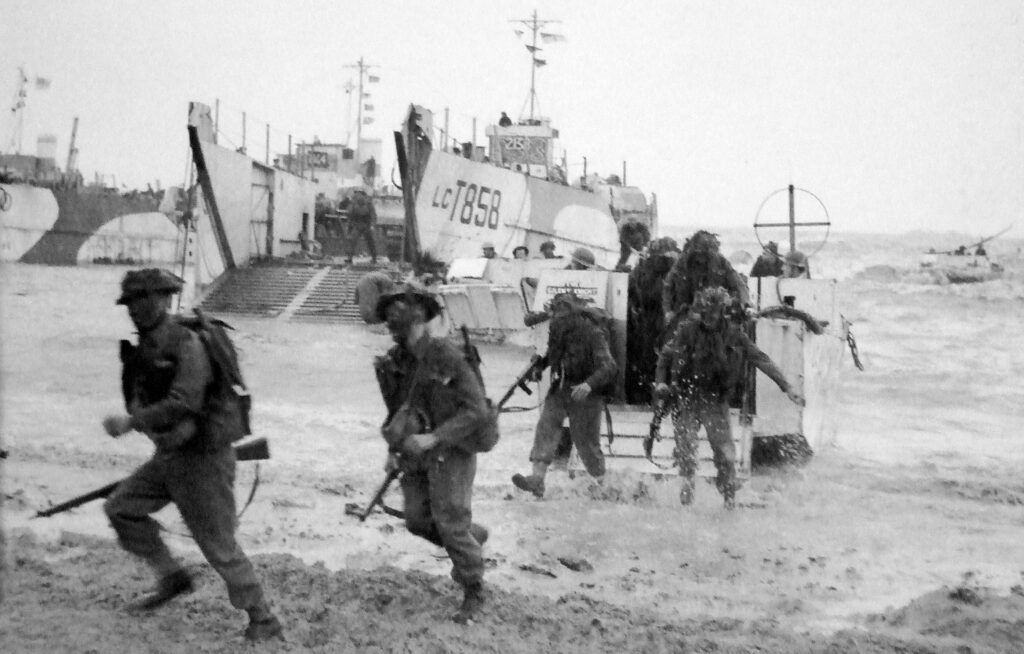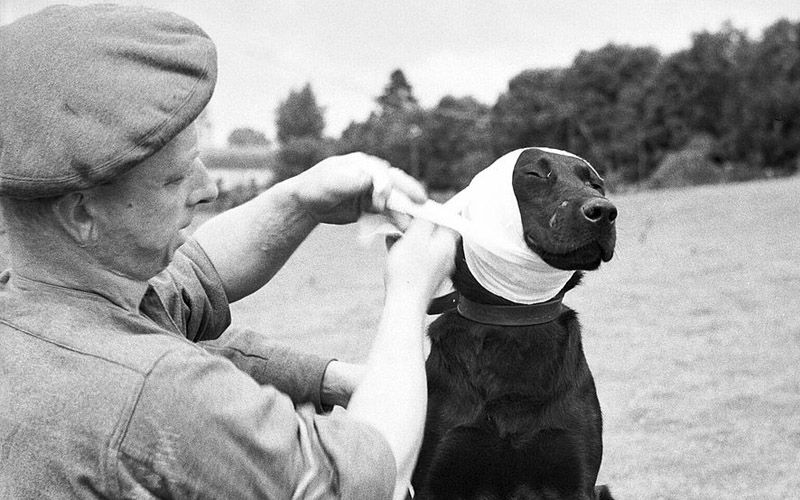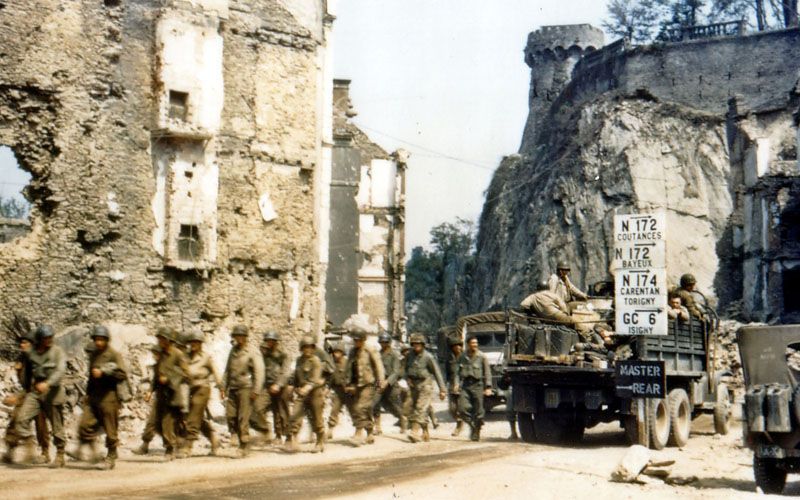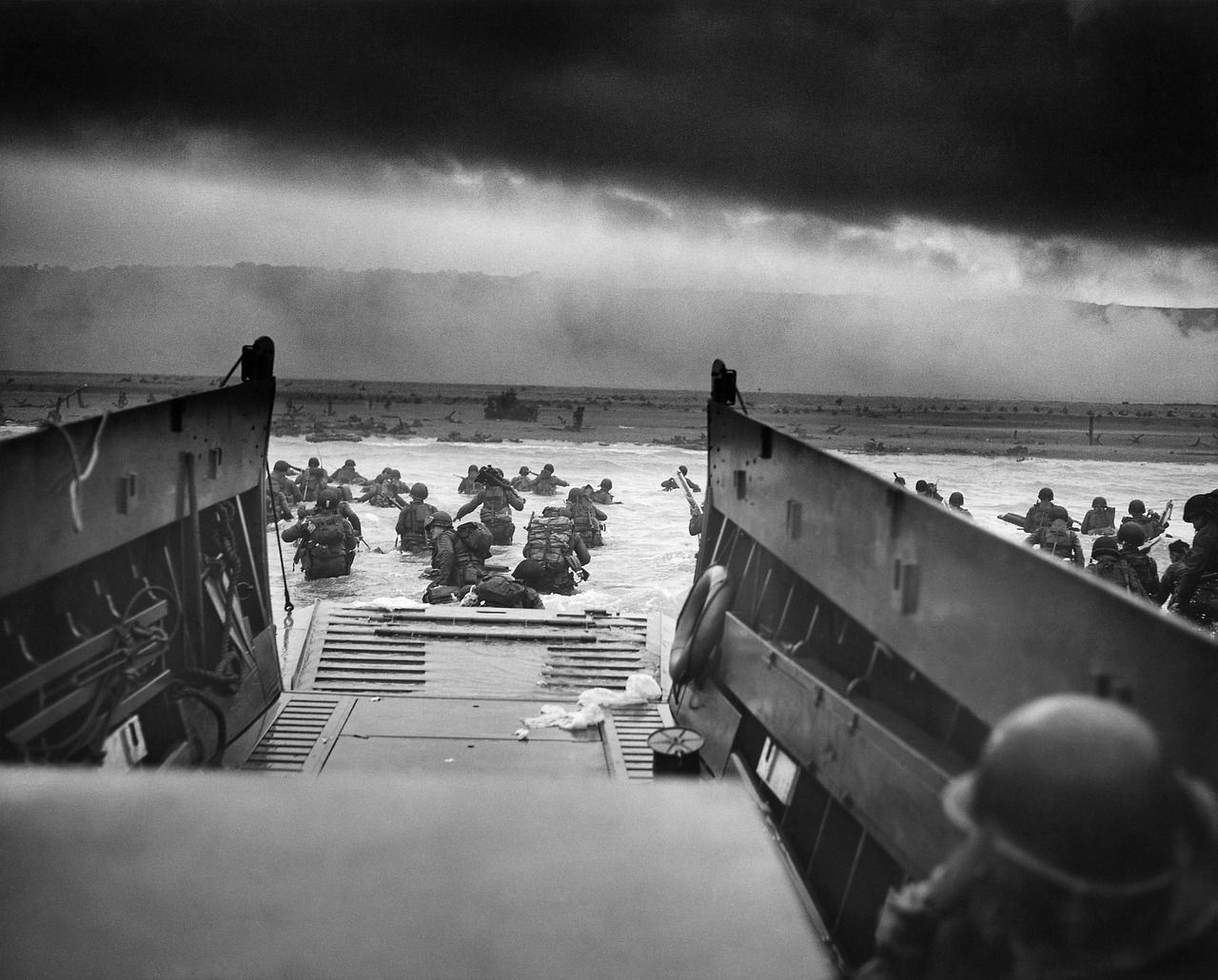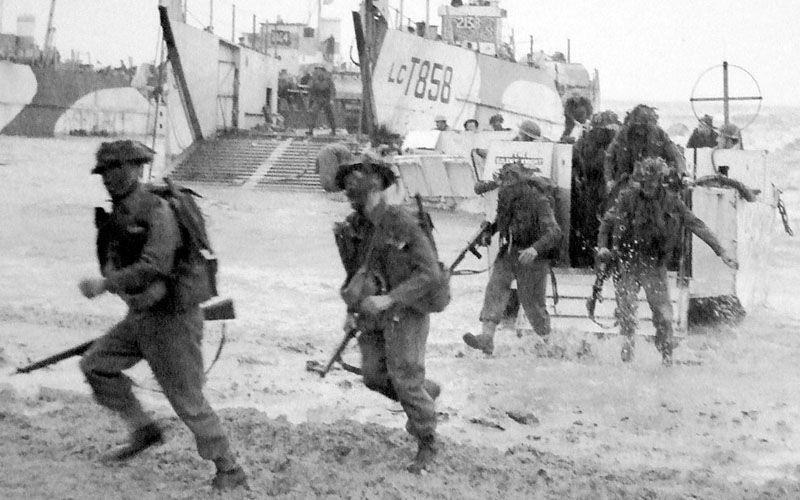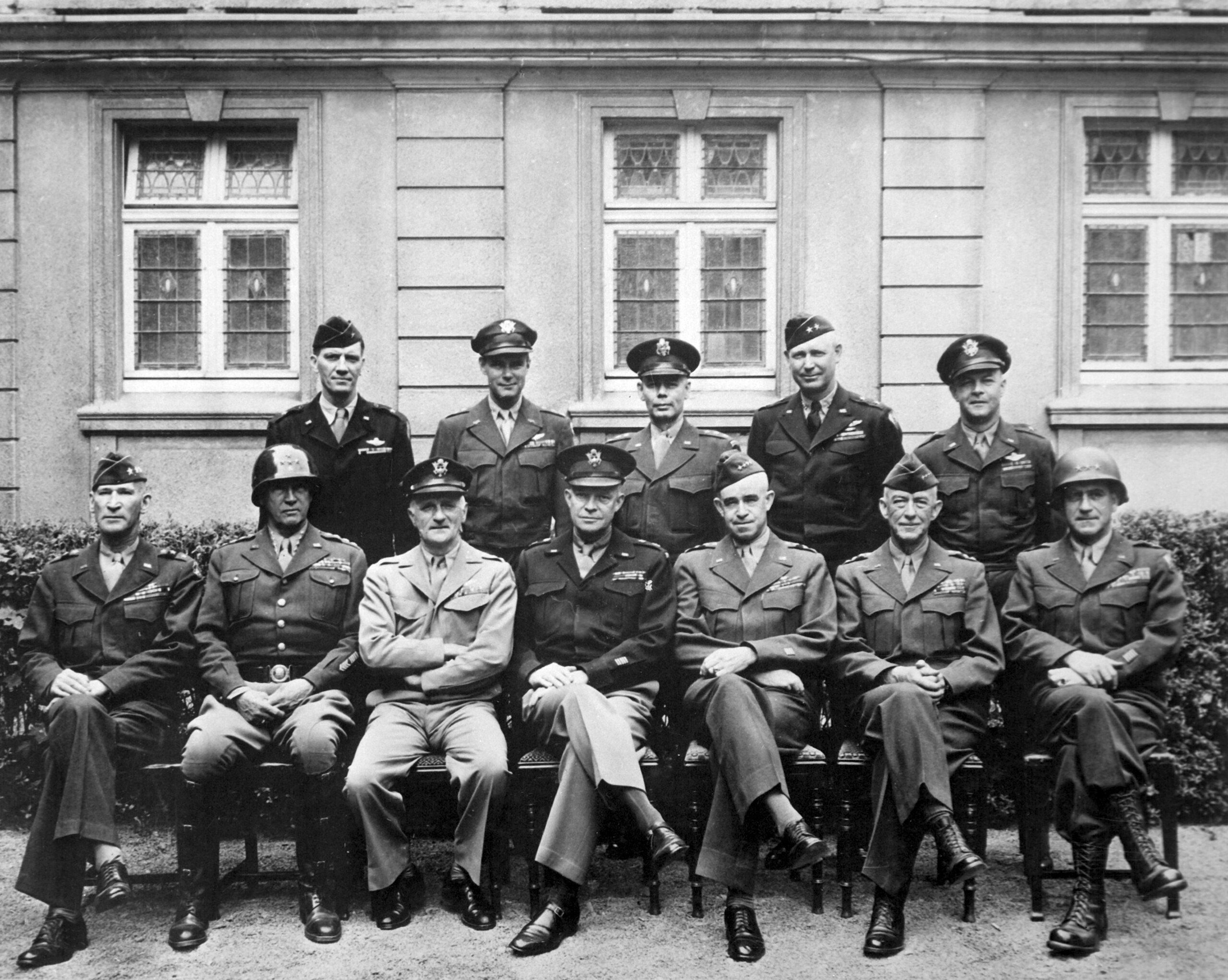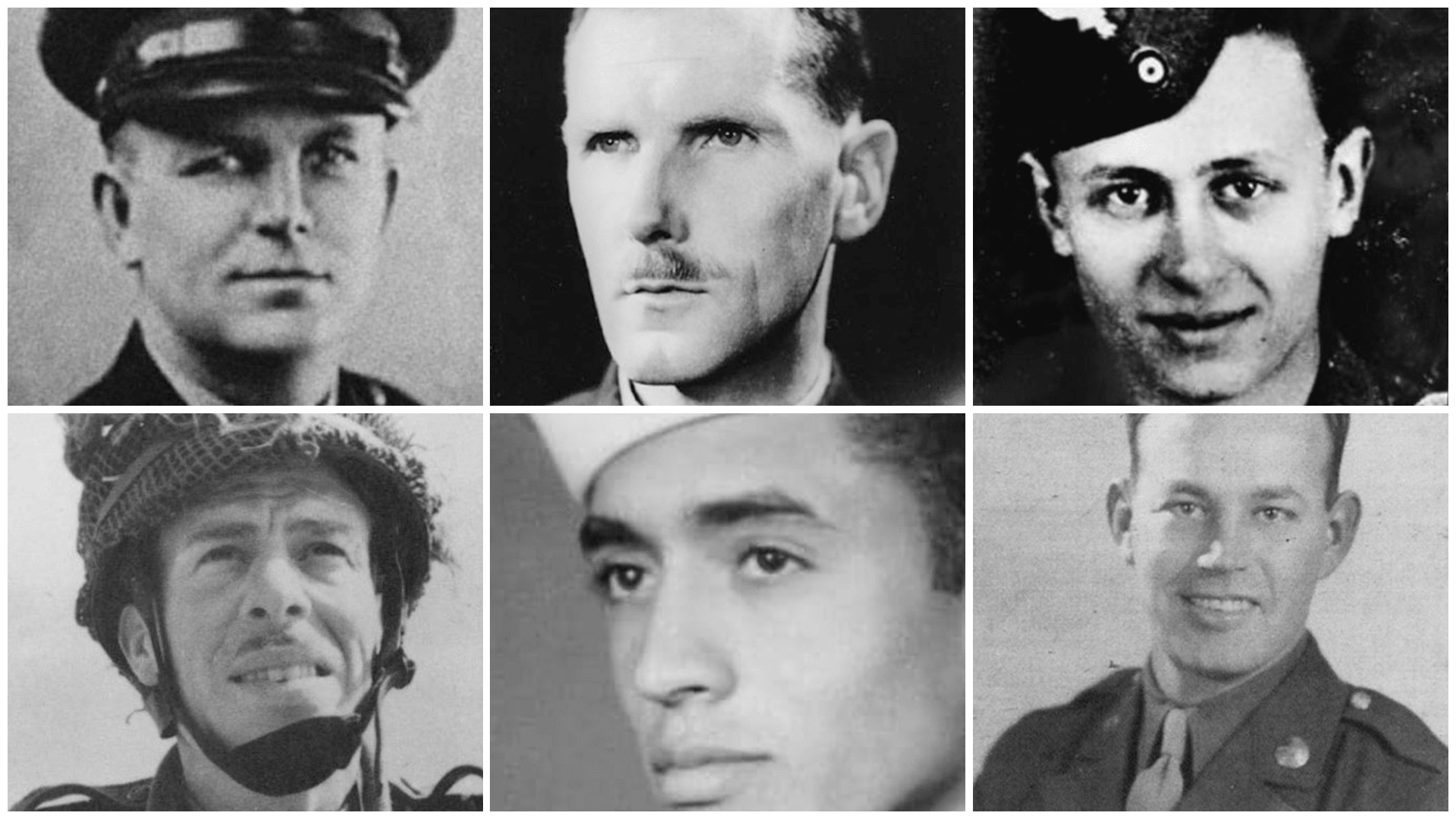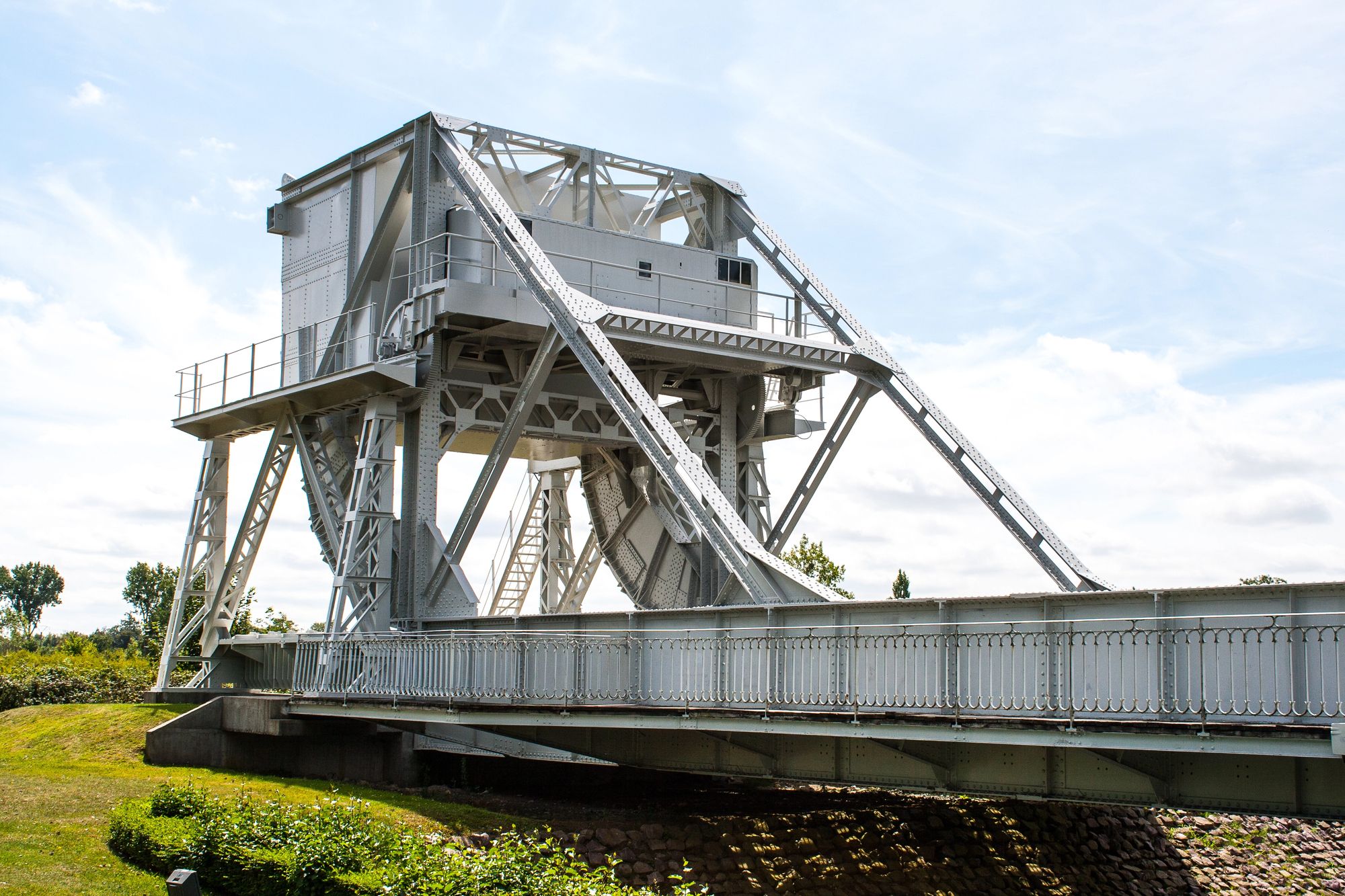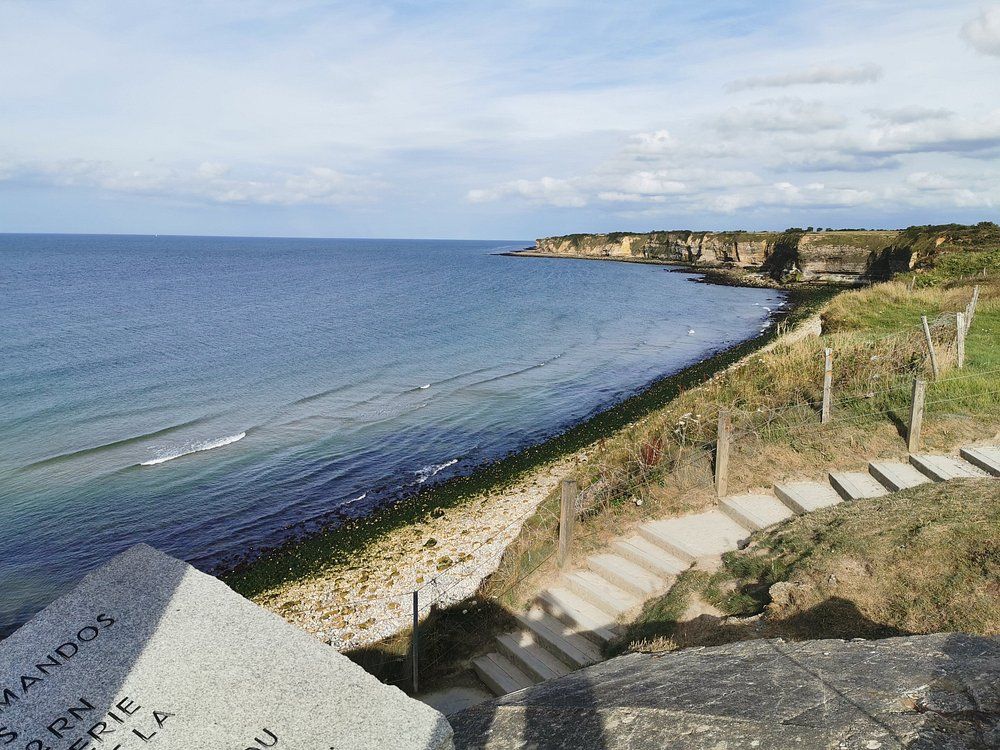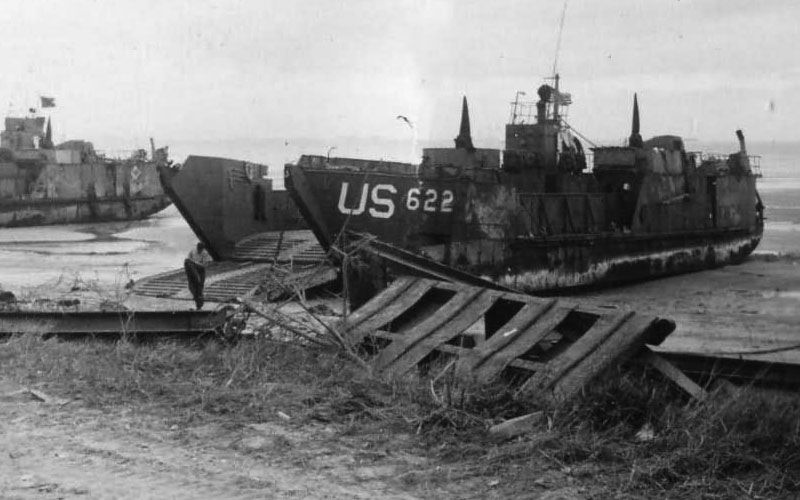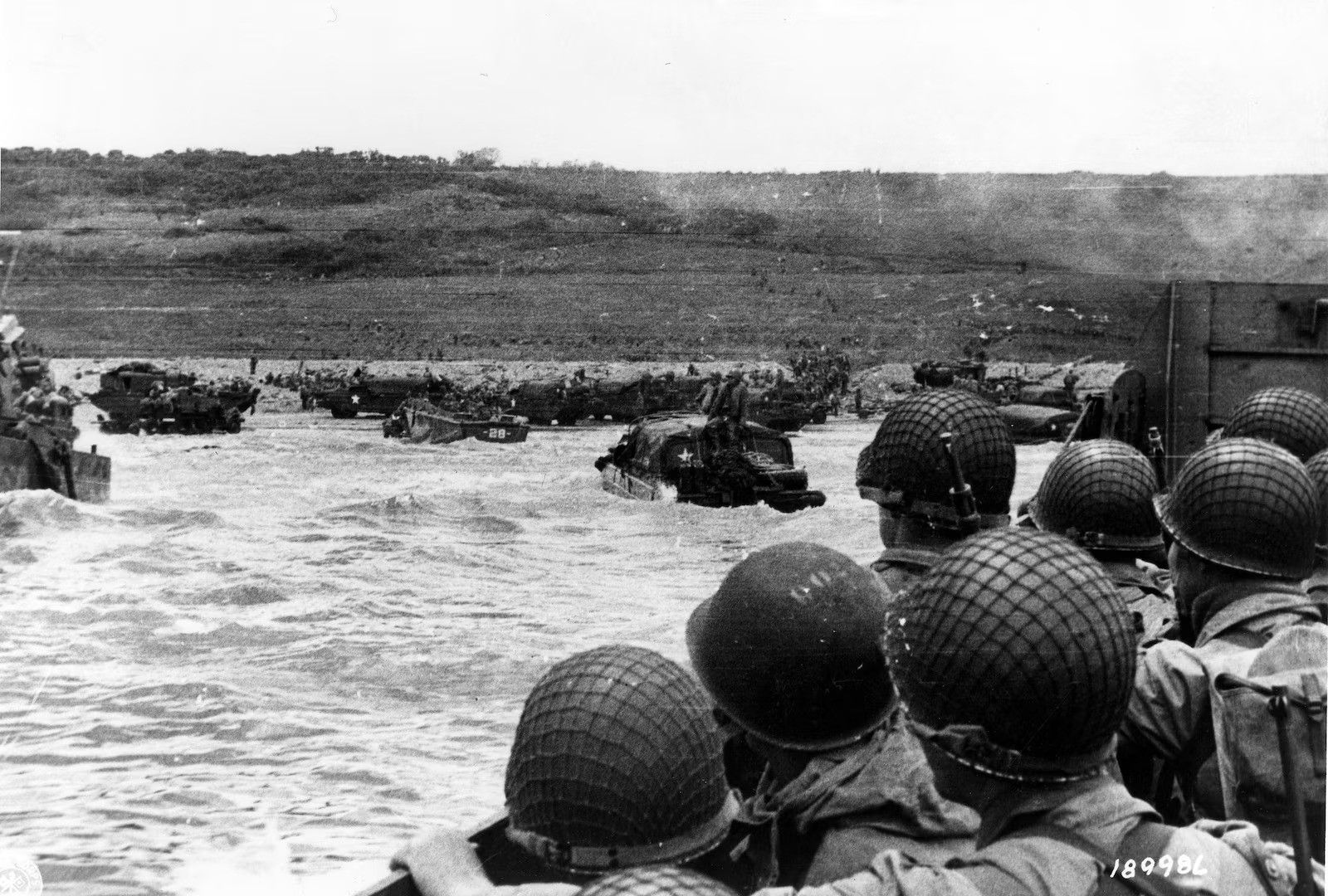Gold Beach stands as one of the five crucial landing zones during the Allied invasion of Normandy on June 6, 1944. Located in the center of the D-Day assault area, this stretch of French coastline saw nearly 25,000 British soldiers come ashore as part of Operation Overlord. The British forces at Gold Beach achieved significant success, breaking through German defenses and pushing inland to reach the Caen-Bayeux road on the first day.
The assault on Gold Beach was well-executed, with specialized equipment playing a vital role in the operation. Flail tanks cleared paths through German minefields, while self-propelled artillery provided crucial fire support for advancing troops. This careful planning allowed British units to move swiftly beyond the beach defenses and push toward their objectives with fewer casualties than might have been expected.
By midnight on D-Day, British forces from Gold Beach had advanced to the outskirts of Bayeux and established a firm foothold in Nazi-occupied France. Their rapid progress helped create the foundation for the eventual Allied victory in Europe, demonstrating the effectiveness of combined arms operations and careful tactical planning in overcoming heavily defended positions.
Historical Context
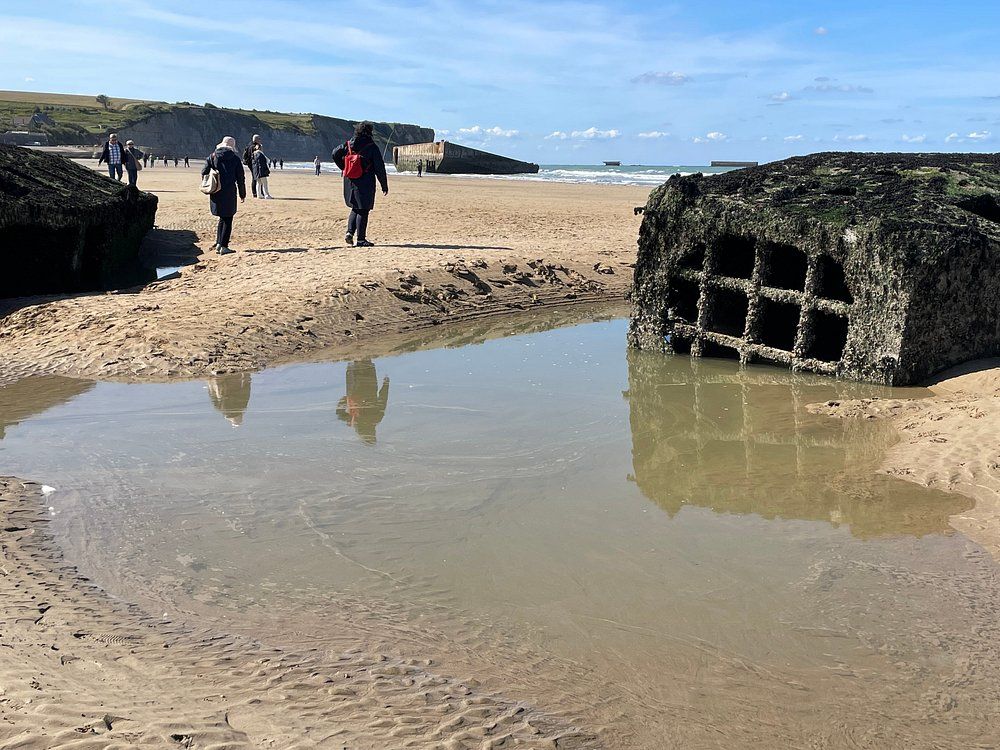
Gold Beach was part of the ambitious Allied plan to liberate Nazi-occupied Europe through the Normandy landings on June 6, 1944. The British 50th Division was assigned to this sector as part of a coordinated five-beach assault.
Prelude to D-Day
By early 1944, Germany had occupied France for nearly four years, establishing the “Atlantic Wall” – a series of coastal fortifications along the French coastline. Hitler appointed Field Marshal Rommel to strengthen these defenses, anticipating an Allied invasion.
The Allies had been building up forces in Britain since the United States entered the war in 1941. Military planners recognized that a successful invasion of Nazi-occupied Europe would require careful coordination, deception, and overwhelming force.
Several factors made June 1944 the optimal time for invasion: improved weather conditions, growth of Allied military strength, and the need to relieve pressure on Soviet forces fighting on the Eastern Front.
Operation Overlord Planning
Operation Overlord became the codename for the Allied invasion of Normandy. General Dwight D. Eisenhower was appointed Supreme Commander of the Allied Expeditionary Force to oversee this massive operation.
Allied planners divided the Normandy coastline into five landing zones: Utah and Omaha (American), Gold and Sword (British), and Juno (Canadian). Gold Beach, stretching from La Rivière to Le Hamel, was assigned to the British 50th Infantry Division.
The planning for Gold Beach included detailed intelligence gathering about German defenses, extensive training for troops, and specialized equipment like amphibious DD tanks and AVRE engineering vehicles.
The Allies implemented an elaborate deception plan called Operation Bodyguard to convince Germany that the invasion would occur at Pas-de-Calais rather than Normandy. This strategy successfully diverted German forces away from the actual landing sites.
Gold Beach Overview
Gold Beach was one of the five designated landing areas during the Allied invasion of Normandy on June 6, 1944, commonly known as D-Day. The British XXX Corps was assigned to this crucial sector located on the French coast along the English Channel.
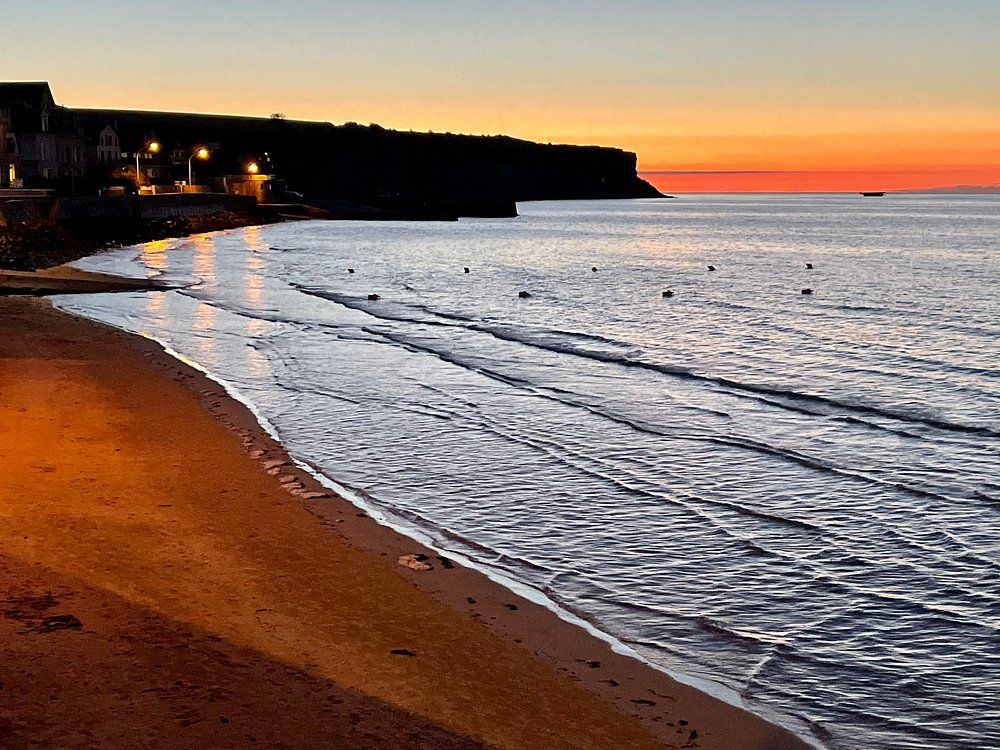
Geographical Significance
Gold Beach stretched across approximately 5 miles of coastline between Arromanches and La Rivière in Normandy, France. It was strategically positioned between Omaha Beach (assigned to American forces) to the west and Juno Beach (assigned to Canadian forces) to the east.
The beach terrain varied significantly. The western portion near Arromanches featured lower cliffs that gave way to a more accessible shoreline. The eastern section had marshy, low-lying areas. Several small seaside towns dotted the coastline, including La Rivière, Le Hamel, and Arromanches.
After securing the beach, Arromanches became the site of one of the artificial harbors (called “Mulberry harbors”) that were crucial for supplying the Allied forces as they pushed inland.
Objective of the Gold Beach Assault
The primary objective of the Gold Beach landing was to establish a beachhead from which British forces could advance inland toward Bayeux and ultimately link up with other Allied forces. Capturing Bayeux was strategically important as it was the first major town behind the invasion beaches.
British forces aimed to cut the Caen-Bayeux road, a key transportation route for German reinforcements. This would help isolate the battlefield and prevent German troops from organizing an effective counterattack.
By midnight on June 6, nearly 25,000 British soldiers had landed on Gold Beach. They successfully pushed inland, reaching the outskirts of Bayeux and establishing positions along the Caen-Bayeux road, achieving many of their Day 1 objectives despite strong German resistance.
Forces Involved
Gold Beach witnessed a clash between well-prepared British assault forces and German defenders who were part of Hitler’s Atlantic Wall defenses. The battle outcome would be determined by the strength, equipment, and tactics of both sides.
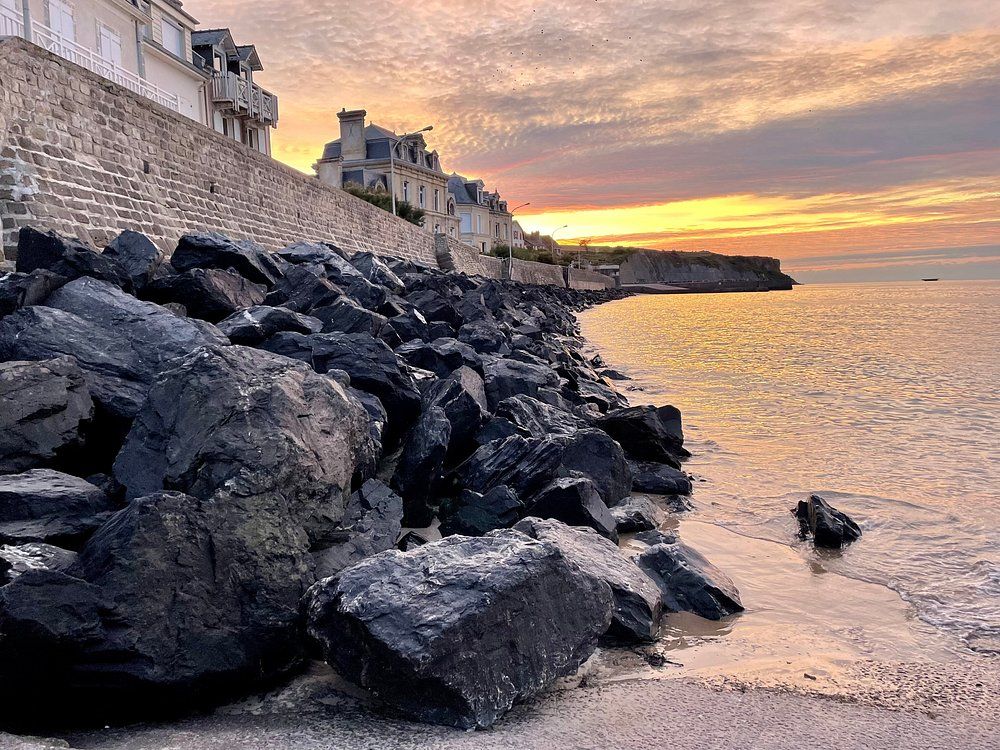
Allied Forces
The primary assault force at Gold Beach was the British 50th (Northumbrian) Infantry Division, commanded by Major General Douglas Graham. This experienced division had previously fought in North Africa and Sicily.
The 231st Brigade led the eastern sector assault, while the 69th Brigade attacked the western sector. Supporting these infantry forces was the specialized 8th Armoured Brigade, which provided crucial tank support.
Royal Engineers played a vital role in the landing operations. They deployed specialized equipment including:
- Churchill AVRE (Armoured Vehicle Royal Engineers) tanks
- Mine-clearing flail tanks
- Bulldozers for clearing beach obstacles
The Royal Navy contributed significantly by providing:
- Transport vessels for troops
- Minesweeping operations
- Naval bombardment support to soften German defenses
German Defenders
Gold Beach was defended by elements of the German 716th Infantry Division. This division was considered a “static” defense unit, meaning it lacked the mobility and equipment of elite German formations.
The German defenders had established significant fortifications along the beach, including:
- 500 machine gun positions
- 50 mortar emplacements
- 90 artillery pieces of various calibers
These defenses were part of Hitler’s Atlantic Wall strategy to prevent Allied landings. The 716th Division comprised 29 companies, though many were understrength and included older soldiers and those from occupied territories who were less motivated than regular German troops.
German coastal batteries posed a serious threat to landing forces, particularly at strategic points that overlooked the beach approaches. Despite their extensive defensive preparations, the Germans lacked adequate mobile reserves to counter the Allied breakthrough.
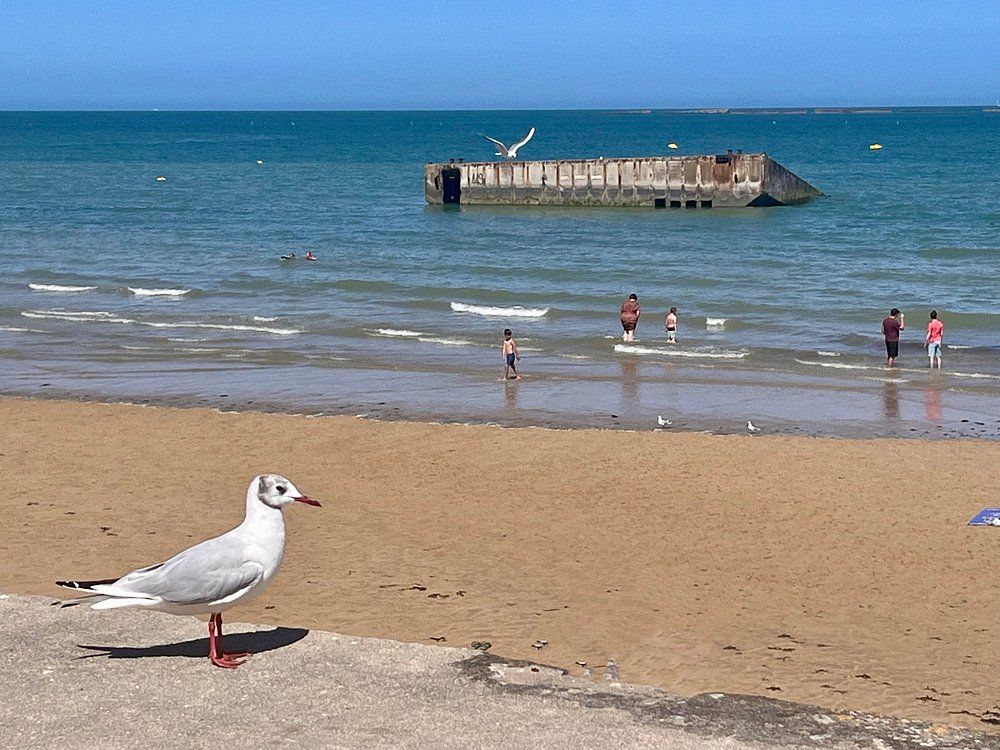
The Assault on Gold Beach
Gold Beach was a key landing area during the Normandy invasion on June 6, 1944. British forces faced significant German defenses as they stormed this strategic stretch of French coastline between Omaha and Juno beaches.
Naval Bombardment and Beach Defenses
The assault on Gold Beach began with a powerful naval bombardment. Allied warships targeted German gun emplacements and defensive positions to weaken resistance before troops landed. The HMS Belfast and other vessels fired thousands of shells at concrete bunkers and artillery positions.
German defenses at Gold Beach included concrete gun emplacements, wooden stakes, and extensive minefields. The Germans had built part of their Atlantic Wall here with barbed wire obstacles and anti-tank ditches that posed serious threats to landing craft and troops.
Special tanks called “flails” proved crucial during the assault. These modified Sherman tanks had rotating chains that beat the ground ahead to detonate mines safely, creating paths through dangerous minefields for advancing troops.
Landing Operations
The British 50th (Northumbrian) Infantry Division spearheaded the Gold Beach assault at 7:25 am on D-Day. This experienced unit included regiments from Devonshire, Hampshire, and Dorsetshire. Landing craft delivered soldiers directly onto the beach while facing enemy fire.
Initial resistance varied across the beach sectors. The western areas encountered stronger opposition than eastern sections. Many landing craft hit obstacles or mines, causing casualties before troops even reached the shore.
Despite challenges, British forces adapted quickly. Specialized vehicles like amphibious DD tanks provided crucial support for infantry. Royal Engineers worked under fire to clear beach obstacles, allowing more troops and equipment to land throughout the morning.
Initial Inland Advancement
Once established on the beach, British troops began moving inland toward key objectives. Their primary goals included capturing the town of Bayeux and connecting with American forces from Omaha Beach to the west.
The 50th Division made solid progress on D-Day. By mid-afternoon, they had advanced nearly 6 miles inland in some areas. British forces liberated several coastal villages including La Rivière and Le Hamel, though they faced determined resistance from German defenders.
One significant achievement was the capture of Arromanches, which later became the site of an artificial harbor (Mulberry harbor). This engineering marvel would prove vital for supplying Allied forces in the days following the invasion. The overall success at Gold Beach contributed significantly to establishing the Allied foothold in Normandy.
Challenges and Casualties
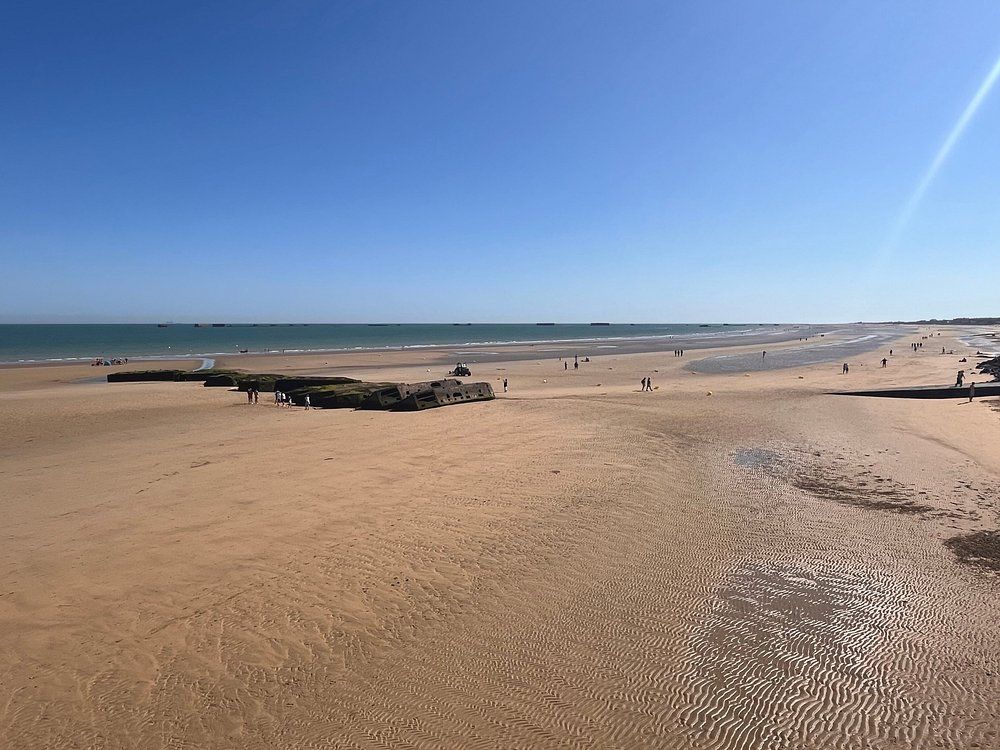
The assault on Gold Beach during D-Day faced significant obstacles that resulted in substantial losses. Allied forces encountered a combination of natural barriers, man-made defenses, and determined German resistance.
Minefields and Obstacles
German forces prepared extensive defensive measures along Gold Beach to impede Allied landings. Engineers placed thousands of mines across the beach and in nearby waters, creating deadly hazards for approaching troops and vehicles.
These minefields were supplemented with various obstacles including:
- Belgian Gates: Large metal barriers designed to block landing craft
- Hedgehogs: Angular metal structures that could tear open boat hulls
- Tetrahedrons: Concrete pyramids that blocked vehicle movement
- Wooden stakes: Often topped with mines and positioned to be hidden at high tide
Allied demolition teams faced the dangerous task of clearing paths through these defenses under enemy fire. Many engineers became casualties while attempting to create safe lanes for the following waves of troops.
German Strong Points
The German defenses at Gold Beach included several fortified positions designed to control the beach approaches. These defenses formed part of the Atlantic Wall system ordered by Hitler.
Key strong points included:
- WN 36: A reinforced concrete bunker near La Rivière with multiple machine gun positions
- WN 37: Positioned at Le Hamel with artillery capable of firing along the entire beach
- Mont Fleury Battery: A heavy gun emplacement threatening the eastern flank
These positions contained interlocking fields of fire from pillboxes, bunkers, and trenches. Many were protected by concrete walls several feet thick, making them resistant to naval bombardment. German troops inside these fortifications maintained resistance for hours, inflicting casualties on landing forces until British troops could outflank or directly assault them.
Casualty Reports
The human cost of securing Gold Beach was significant, though lower than some other landing zones. British forces suffered approximately 1,020 casualties, including around 350 killed in action according to records from The D-Day Story museum in Portsmouth.
Naval support units lost about 20 personnel, while air forces supporting the operation suffered around 60 fatalities. These numbers represented:
- Infantry losses during initial beach assaults
- Engineer casualties during mine clearance operations
- Crew members from disabled landing craft
- Soldiers lost to artillery and machine gun fire
Key Locations
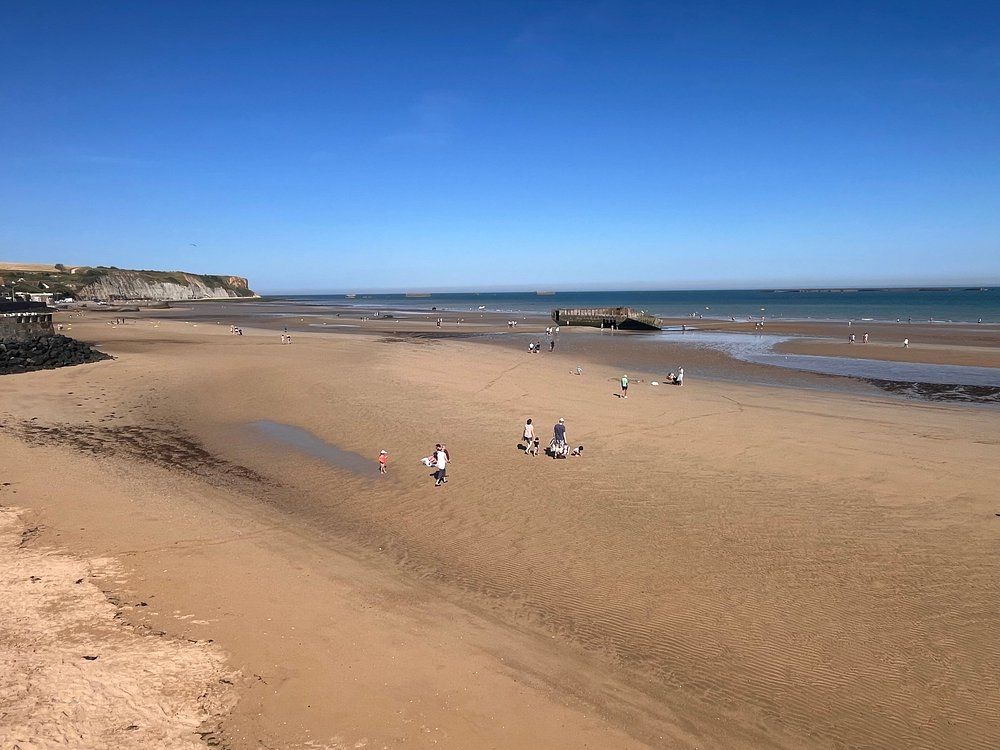
Gold Beach was home to several strategic locations that became crucial objectives during the D-Day landings. British forces needed to capture these key positions to establish a foothold in Normandy and continue their advance inland.
Battle for Bayeux
Bayeux stood as a primary objective for British forces landing at Gold Beach. Located about seven miles inland from the coast, this historic Norman town represented the first major settlement targeted for liberation. The 50th Infantry Division spearheaded the advance toward Bayeux on June 6, 1944.
British troops had to first capture the Meuvaines Ridge, roughly one mile from the shoreline, before pushing toward the town. Despite facing German resistance, they made significant progress.
By the evening of D-Day, British forces had advanced closer to Bayeux than any other Allied unit had to their objectives. The following morning, on June 7, the 56th Brigade entered Bayeux, making it the first French city to be liberated.
Capture of Port-en-Bessin
Port-en-Bessin, a small fishing harbor located at the western edge of Gold Beach, became a critical objective for the British 47 Commando. This natural harbor sat between Gold and Omaha beaches, making it a valuable link between British and American forces.
The 47 Royal Marine Commando landed at Gold Beach on D-Day with orders to move westward and seize the port. Their journey was difficult, as they had to move behind German lines while avoiding detection.
After suffering heavy casualties during the initial landing, the Commandos regrouped and launched their attack on Port-en-Bessin on June 7. The battle was fierce, with the Marines facing determined German defenders in well-fortified positions.
By June 8, the Royal Marines had secured the port after intense fighting. This victory provided the Allies with a vital harbor for supplying troops and established a physical link between British and American sectors.
Link-Up with American Forces
A key objective for troops landing at Gold Beach was to connect with American forces from Omaha Beach to their west. This connection would unify the Allied beachhead and prevent German forces from exploiting any gaps between landing areas.
British units, including the Hampshire Regiment, pushed westward from Gold Beach toward Port-en-Bessin, which marked the boundary with the American sector. Despite fierce German resistance, British forces made steady progress.
The German battery at Longues-sur-Mer, located between Gold and Omaha beaches, presented a significant obstacle. Royal Navy bombardment and ground attacks eventually neutralized this threat.
By June 7, British forces had successfully linked up with American troops from Omaha Beach. This connection created a continuous Allied front spanning from Utah Beach in the west to Sword Beach in the east. The link-up prevented German counterattacks from splitting the invasion force and was crucial for the overall success of Operation Overlord.
Outcome and Significance
The Allied landing at Gold Beach on D-Day represented a crucial success that contributed significantly to the overall Normandy invasion. British forces achieved their primary objectives despite fierce resistance, establishing a foothold that would help turn the tide of World War II.
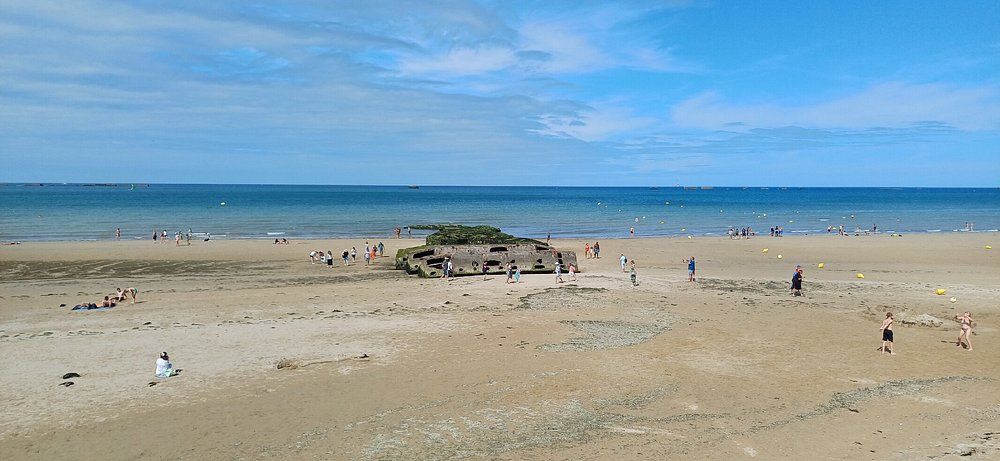
Establishment of a Beachhead
By the end of D-Day, approximately 25,000 British troops had successfully landed on Gold Beach. The 50th Infantry Division pushed inland with determination despite initially facing strong German defenses. At Asnelles, British forces secured the village and surrounding areas, creating a stable beachhead from which to expand operations.
The landing forces overcame beach obstacles, minefields, and enemy fire to establish their position. Engineers quickly cleared paths through defensive barriers while infantry moved inland. Most units reached their Day 1 objectives, though some faced delays due to unexpected resistance.
British commanders established command posts behind the beach by midday, coordinating the flow of reinforcements and supplies. This quick organization helped transform the initial landing into a secure base for further operations.
Strategic Gains and Momentum
Gold Beach forces secured several key objectives that proved vital to the invasion’s success. British troops captured the important coastal town of Arromanches, which later became the site of an artificial harbor crucial for supplying Allied forces.
The advance inland allowed British units to link up with Canadian forces from Juno Beach by the evening of June 6. This connection strengthened the Allied position along the coast and created a unified front. Though they fell short of capturing Bayeux on the first day, British troops took the town on June 7.
British forces also cut the important Caen-Bayeux road, disrupting German communications and reinforcement capabilities. This achievement limited the Germans’ ability to mount effective counterattacks against the beachhead.
By pushing 6-8 miles inland in some sectors, Gold Beach troops created valuable space for incoming Allied forces and equipment.
Aftermath and Legacy
Gold Beach operations contributed significantly to the success of Operation Overlord. The establishment of the artificial harbor at Arromanches (codenamed “Mulberry B”) provided a critical supply line that supported Allied forces throughout the Normandy campaign.
The British advance from Gold helped create pressure on German forces defending Caen, ultimately leading to the city’s liberation in July 1944. Though the battle for Caen proved difficult, the momentum generated from Gold Beach kept German forces off-balance.
The successful cooperation between British and Canadian forces demonstrated the effectiveness of Allied planning and training. Their combined efforts helped establish the foundation for the liberation of Western Europe.
Today, numerous monuments and museums along Gold Beach commemorate the bravery of those who fought there. The remains of the Mulberry harbor at Arromanches serve as a visible reminder of the engineering achievements that supported the Allied victory.
Allied Coordination and Strategy
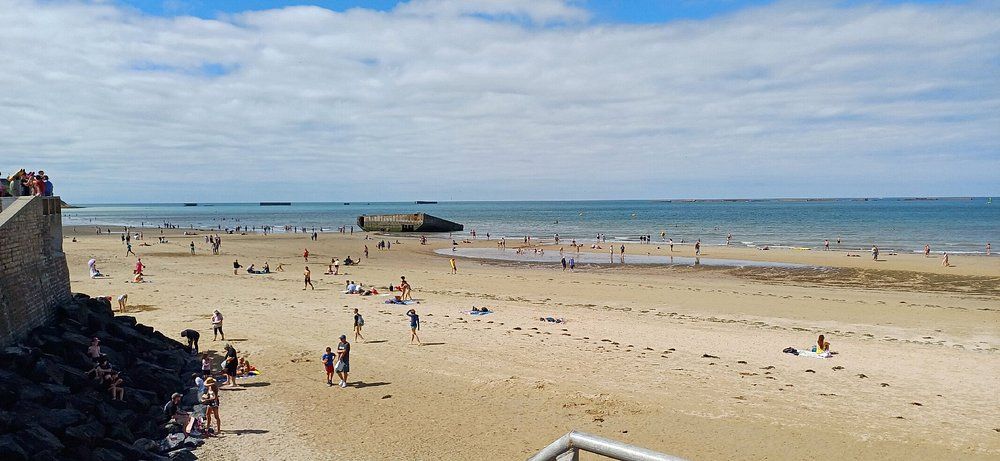
The Allied forces executed a complex strategy at Gold Beach, requiring precise coordination between naval, air, and ground forces. British commanders carefully integrated the assault with nearby landings and support operations to maximize their chances of securing this crucial section of the Normandy coast.
Joint Operations with Other Beaches
Gold Beach’s operations were closely coordinated with adjacent landing zones at Juno and Omaha beaches. The British 50th Infantry Division at Gold maintained tactical communication with Canadian forces at Juno Beach to ensure a unified front as they pushed inland. Their objective was to create a continuous Allied presence along the coast.
Communication systems between beaches included radio networks and liaison officers who relayed updates about enemy positions and breakthrough points. Naval support vessels operated in designated zones, providing artillery support across multiple beaches when needed.
One key goal was linking Gold with Omaha Beach to the west, where American forces faced heavy resistance. The 47th Royal Marine Commandos specifically moved westward from Gold with orders to capture Port-en-Bessin, creating a vital connection between British and American sectors.
Role of Airborne Divisions
Airborne forces played a critical supporting role in the Gold Beach operation. While the main paratrooper drops targeted areas near Utah and Sword beaches, their actions directly benefited Gold Beach operations.
The British 6th Airborne Division landed east of Gold Beach, securing bridges over the Orne River and Caen Canal. This prevented German reinforcements from reaching Gold Beach from the east, giving the seaborne forces crucial time to establish their position.
Airborne operations began shortly after midnight on June 6, hours before the main beach landings. Glider troops and paratroopers disrupted German communications and confused their command structure during these vital early hours.
Special pathfinder teams dropped ahead of the main airborne forces to mark landing zones with radio beacons and lights, ensuring more accurate deployment despite challenging night conditions.
Use of Armoured Divisions
Specialized armored support proved crucial to success at Gold Beach. The 79th Armoured Division provided unique vehicles specifically designed for the amphibious assault and beach obstacles.
“Hobart’s Funnies” – modified tanks including mine-clearing flails, bridge-laying tanks, and flame-throwing vehicles – helped overcome German defenses. DD (Duplex Drive) tanks with canvas flotation screens could “swim” ashore, providing immediate heavy firepower for infantry.
British tank regiments coordinated closely with infantry units in pre-planned maneuvers. Once inland, armored units formed the spearhead of advances toward key objectives like Bayeux, which was liberated the day after D-Day.
The British deployed tanks in smaller, more distributed groups than their American counterparts, integrating them directly with infantry battalions. This approach proved effective in the mixed hedgerow and village terrain behind Gold Beach.
Reflections on the Campaign
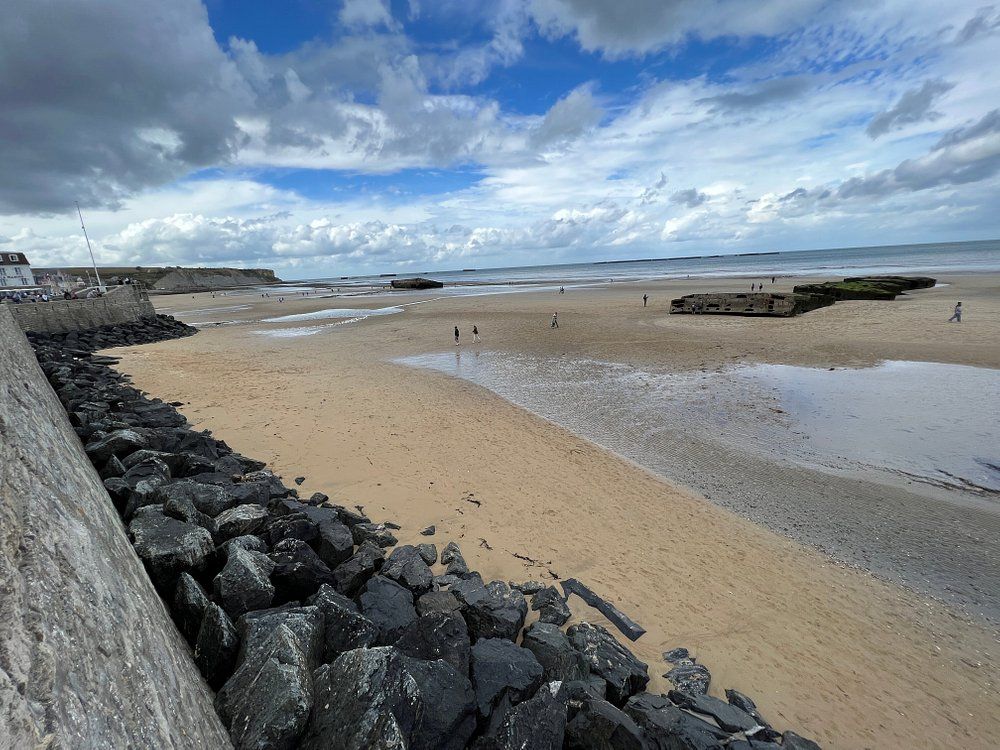
The Gold Beach landings, a vital component of Operation Overlord on June 6, 1944, deserve thoughtful consideration for their strategic importance and human cost. British forces faced significant challenges yet achieved remarkable success in securing their objectives.
The 50th Infantry Division made impressive progress, advancing further inland than any other Allied unit on D-Day. This accomplishment highlights the effectiveness of their training and leadership during this crucial phase of the Allied landing.
German resistance at Gold Beach varied considerably. While some sectors saw limited opposition, other areas featured determined defenders who caused significant casualties among the landing forces.
The campaign’s success can be measured through several key achievements:
- Securing approximately 25,000 troops ashore by the end of D-Day
- Capturing critical coastal villages including La Rivière and Le Hamel
- Establishing crucial beachheads for subsequent reinforcements
- Creating a foundation for the eventual link-up with troops from Juno Beach
Recent commemorations of D-Day, including the upcoming 80th anniversary in 2024, continue to honor the sacrifice and courage displayed during the Normandy Campaign. These events serve as important reminders of the human dimension of military operations.
The Gold Beach landing reminds us that strategic objectives often come with tremendous human cost. Over 400 casualties occurred during the initial assault, representing individual stories of courage and sacrifice that formed the foundation for the liberation of Western Europe.
More Reading:
Read about each of the different landing zones here:
Gold Beach Travel Guide
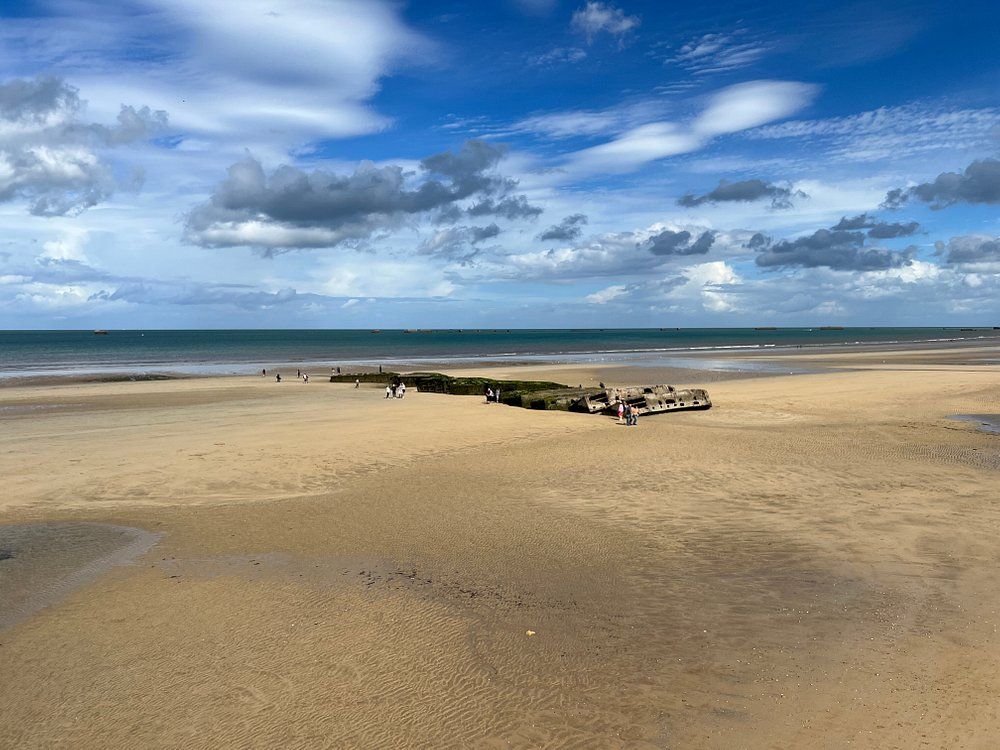
Gold Beach, located in the heart of Normandy, played a crucial role during the Allied invasion on June 6, 1944. This historic stretch of coastline was the landing site for British troops as part of Operation Overlord, marking a turning point in World War II. When visiting Gold Beach today, you’ll find a mix of powerful memorials, informative museums, and preserved wartime sites that tell the story of the brave soldiers who fought for freedom on these shores.
As you walk along the sands where the British 50th Northumbrian Division landed, it’s easy to imagine the challenges faced by Allied forces that fateful day. By evening, these determined soldiers had pushed inland to the outskirts of Bayeux, making significant progress toward the liberation of France. Gold Beach sits between the American and Canadian landing zones, offering a unique perspective on how the different Allied forces coordinated their efforts during the invasion of Normandy.
Gold Beach is not just a historic site but also a beautiful coastal area with charming nearby towns to explore. You can combine your interest in Second World War history with delightful Norman villages, local cuisine, and scenic landscapes. From museums that house artifacts from the battle to bunkers that still stand as silent witnesses, Gold Beach provides an educational and moving experience for visitors of all ages.
Visitor Guide
Gold Beach is one of the five historic D-Day landing beaches in Normandy, France. Located in the middle of the invasion area, it played a crucial role in the Allied forces’ push into northern France during World War II.
When you visit Gold Beach today, you’ll find a peaceful stretch of sand that belies its dramatic past. The beach is near the small town of Arromanches, which is home to the fascinating D-Day Museum.
Best time to visit: May through September offers the most pleasant weather, though June 6th (D-Day anniversary) brings special commemorative events and larger crowds.
Getting around:
- Rental car is highly recommended for flexibility
- Guided tours available from Bayeux or Caen
- Limited public transportation between sites
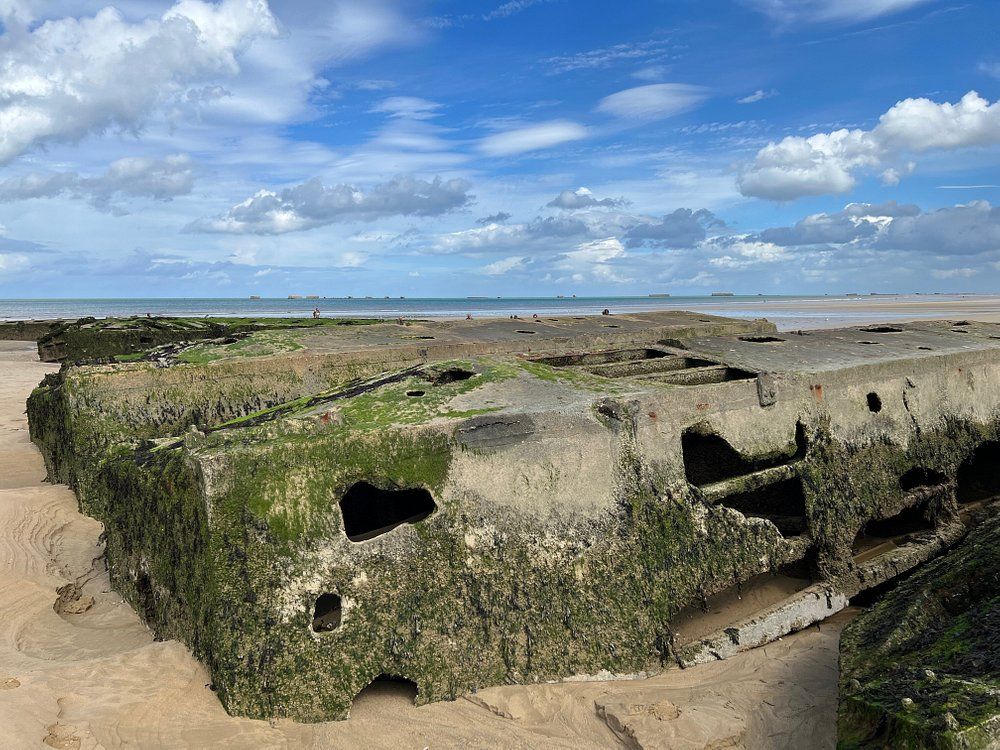
The remains of the Mulberry Harbour, an artificial port created for the landings, can still be seen in the water off Arromanches. This engineering marvel helped supply the Allied forces after the invasion.
Nearby D-Day sites to explore:
- Arromanches 360° Cinema
- Longues-sur-Mer German Battery
- Ver-sur-Mer British Normandy Memorial
- Bayeux War Cemetery
You’ll want to allocate at least half a day to explore Gold Beach and its immediate surroundings. For a deeper understanding of the battle of Normandy, consider hiring a local guide who can provide context and stories not found in guidebooks.
Don’t miss the opportunity to visit the small coastal villages nearby. They offer charming accommodations and restaurants serving fresh seafood and Norman specialties.
Nearby Accommodations
When planning your trip to Gold Beach in Normandy, you’ll find plenty of places to stay. From hotels to vacation rentals, the area offers options for every budget and preference.
Hotels are abundant near Gold Beach, with many located in Asnelles and surrounding towns. Gold Beach Hôtel&Résidence in Asnelles serves as a central option for those wanting to be close to the historic shoreline.
Just 2 miles away, you’ll find Les Villas D’arromanches Teritoria, which receives excellent reviews from travelers. It’s rated as the #1 value hotel in the area.
For a more local experience, consider vacation rentals. Airbnb offers numerous options starting from $20 per night where you can stay with local hosts. These rentals give you a chance to experience Norman life more authentically.
Types of accommodations near Gold Beach:
- Hotels and resorts
- Bed & Breakfasts
- Vacation homes and apartments
- Budget-friendly options
Many accommodations offer views of the beach where Allied forces landed during D-Day. Staying nearby allows you to easily visit the historic sites while enjoying the beautiful Norman coastline.
For the best experience, book your accommodation well in advance, especially if you’re visiting during summer or on D-Day anniversary dates when the area becomes particularly busy with visitors paying tribute to the historic events.
Nearby Things To Do
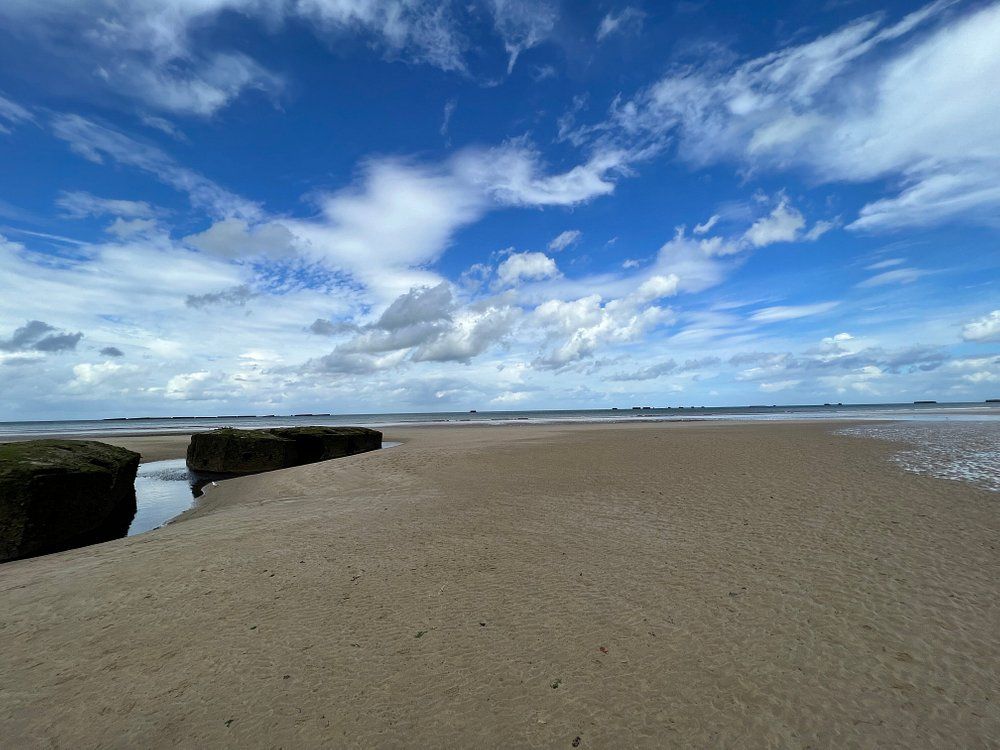
Gold Beach is perfectly situated for exploring many historic D-Day sites and charming Norman towns. You’ll find plenty to fill your itinerary beyond the beach itself.
Historic Beaches: Visit the other D-Day landing beaches – Omaha Beach, Utah Beach, Juno Beach, and Sword Beach. Each has its own story and memorials.
Museums and Memorials:
- D-Day Museum in Arromanches
- Normandy American Cemetery near Omaha Beach
- Juno Beach Centre
- Utah Beach Museum
- Caen Memorial
Arromanches is just minutes away, where you can see the remains of the Mulberry Harbor (artificial port). The engineering marvel helped Allied forces deliver supplies after D-Day.
Bayeux is a charming medieval town nearby with its famous tapestry. It’s perfect for dinner after a day of exploring beaches.
Don’t miss Longues-sur-Mer with its well-preserved German battery, part of the Atlantic Wall defenses.
Pointe du Hoc offers dramatic cliff views where Rangers scaled 100-foot cliffs during the invasion.
Pegasus Bridge in Ouistreham marks where British forces made a daring landing by glider.
The Caen Memorial provides context for understanding the entire Normandy Campaign and is worth at least half a day.
Ver-sur-Mer hosts the British Normandy Memorial, honoring those who fell under British command.
For a change of pace, the beautiful town of Caen offers excellent restaurants, shopping, and historic sites including William the Conqueror’s castle.

